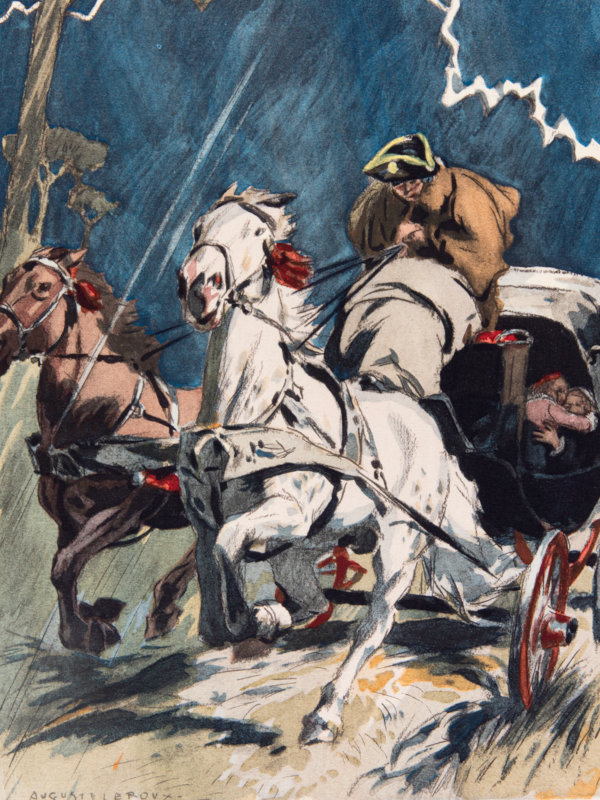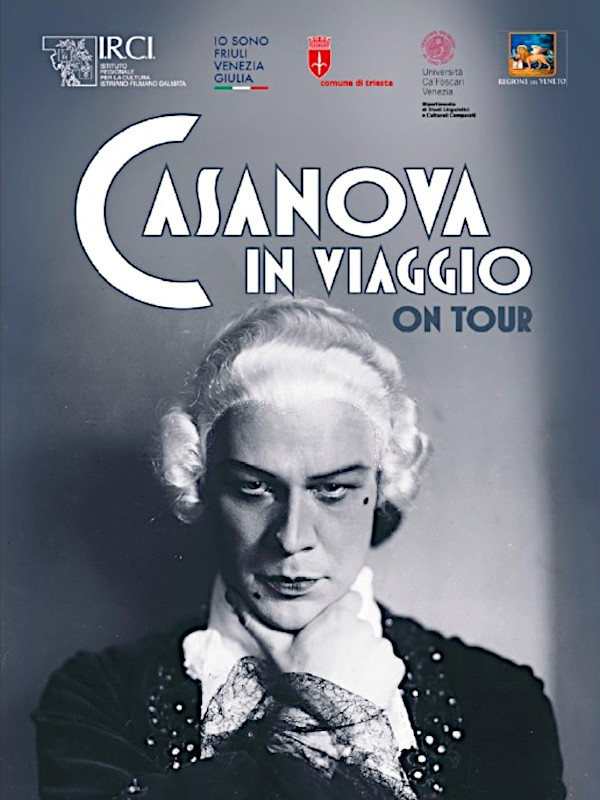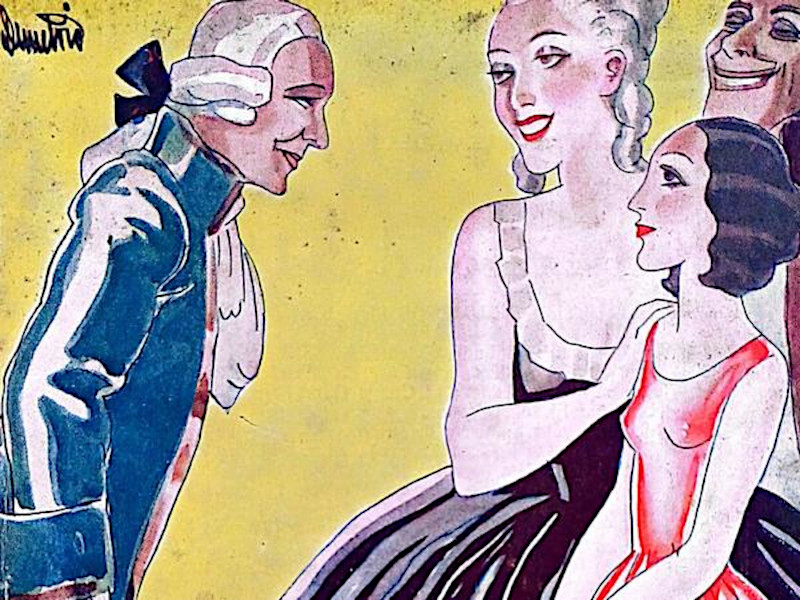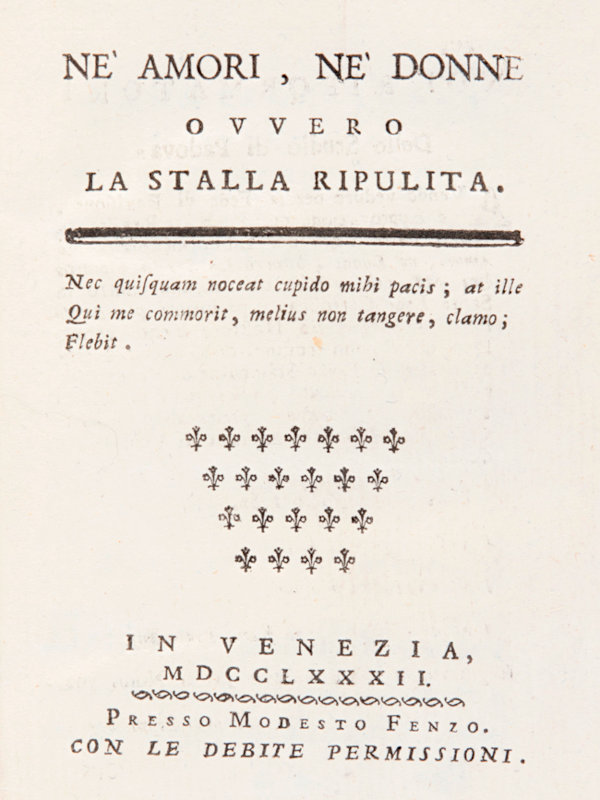Projects
Conference “Casanova in Time”
for the 3dr centenary of the birth of Giacomo Casanova, 1725-2025
Venice, 4-7 June 2025
Giorgio Cini Foundation (Sala Barbantini) and Ca' Foscari University (Ca’ Dolfin - Aula Magna)
In 2025 we mark the 300th anniversary of the birth of Giacomo Casanova (1725-1798), Venetian by birth and European and citizen of the world in his life and works. His historical figure is representative of a world that was disappearing — the Ancien Régime and the Republic of Venice — but also of the anxieties of the eighteenth century and the transformations of modern society. His myth has spanned the last three centuries and reflects the views on the eighteenth century of writers, historians, artists, filmmakers, and exponents of culture and politics.
The three hundred years since his birth represent an opportunity to take stock of the state of the art on Casanova, his historical figure, his works and their fortune, and to encourage research on his world and the images of the eighteenth century.
After the major celebrations of 1998 in Venice and Paris, research on Giacomo Casanova and his world has made great progress through the 2010 acquisition by the Bibliothèque Nationale de France of the manuscript of the Memoirs and the systematic exploration of the Casanova archive at the Statní Oblastní Archiv in Prague. The critical literature includes more than 6,000 contributions published from 1822 to the present, many editions of the Histoire de ma vie, and specialist journals dedicated to Casanova, including «Casanova Gleanings» (1958-1980), «L’Intermédiaire des Casanovistes» (1984-2013), and «Casanoviana» (2018-present, sponsored by Ca’ Foscari University).
Despite this, there is still much work to be done for the publication of the unpublished writings, to reconstruct the intertextual apparatus necessary to relate the texts to each other, to identify the correspondences, and to discover new information on the context of places, characters, and situations related to Casanova’s world. These are the themes of this conference.
Exhibition “Casanova on tour”
Ports and landing places from the Adriatic to the Levant: Trieste, Istria, Rijeka and the Dalmatia (Trieste, 31/05-20/09/2025)
This exhibition highlights a little-known section of the memoirs of Giacomo Casanova: that of his travels along the coasts of Istria and Dalmatia to the Aegean and Constantinople, through the cities and Adriatic ports belonging to the Republic of Venice. The project is organized in collaboration with the Veneto Region; the Regional Institute for Istrian, Fiumano and Dalmatian Culture (IRCI); the State Archives of Pisino / Državni arhiv u Pazinu; the State Archives of Fiume / Državni arhiv u Rijeci; and the “Giuseppe Tartini” Society for Studies of the History, Geography, and Italian Communities of Pirano.
Casanova’s memoirs of his travels through Istria and Dalmatia recall the years 1744-1745. His writings are one of the first descriptions of the condition of the cities, the inhabitants, the social life, and the public health status of the region, as well as of navigation in the Adriatic. His story provides a vivid fresco of a reality we otherwise know primarily through institutional and official documents. The main stages of his journey are ports and landing places such as Orsera/Vrsar (which today is the only city in the world with a public statue dedicated to Casanova); Pola/Pula; Curzola/Korčula; Zante/Zàkynthos; and then Corfù/Kérkyra; Citera/Kythera; and Constantinople/Istanbul. For each of these places he recounts the peculiar characteristics, from the landscape to the health conditions, from the exile of galley slaves to the duties of the military, from the seat of government to the traces of the Byzantine empire, as well as his encounters with the Slavs and Turks. This picture from his memoirs can be compared with the cultural and historical description of Istria, Fiume, and Dalmatia that is documented in Casanova’s other published and unpublished writings. These include the manuscripts he left at in Dux (now preserved in Prague), along with letters from the period of his stay in Trieste (1772-1774). Casanova was interested in the development of trade in Fiume/Rijeka, and he was knowledgeable about places such as Pirano/Piran, Cittanova/Novigrad, Zara/Zadar, and Ragusa/Dubrovnik, where many of his friends came from. He also knew such personalities as the economist and historian Gianrinaldo Carli from Capodistria/Koper and the adventurer Stefano Zannowich from Budva, Montenegro.
The exhibition is organized in two sections. The first section concerns the itinerary of Casanova’s travels in the Adriatic; the second concerns the myth of Casanova in the twentieth century, starting from the first film dedicated to him, namely Alfréd Deésy’s “Casanova” shot in 1918, in the midst of the world conflict, against the backdrop of the city of Ragusa/Dubrovnik. After the opening in Trieste (30 May 2025), the exhibition’s first section will move in succession to Pirano/Piran, Pisino/Pazin, and Fiume/Rijeka.
Exhibition “Translation, translators and adaptations of Casanova”
Venice, 3/06-20/07/2025
The exhibition, organized in collaboration with BALI - Library of Linguistic Area, Finarte Auctions and the Antiquarian Bookshop Drogheria 28 in Trieste, aims to highlight some of the most representative translations of Casanova's Memoirs. Every culture and historical context has been mirrored in the Casanovian tale, contributing to the birth and construction of the myth, and putting generations of editors, philologists, critics and above all translators. Thirty-two entries illustrate some of the editions and biographies of Casanova's translators from 1822 to 2009.
Podcast “The Hidden Story of Casanova”
“The Hidden Story of Casanova” / “Dietro la Storia: indagine su Casanova” is a podcast series that covers the unknown, and often intentionally hidden, aspect of Casanova’s “History of my Life”.
This podcast series is conducted with Ca’ Foscari University staff and students within the framework of activities of the Department of Linguistics and Comparative and Cultural Studies (DSLCC) as Department of excellence in the study of cultural, literary and language adaptation.
Complete national edition of the works by Giacomo Casanova
A complete edition of the works of Giacomo Casanova is a long-desired undertaking at a national and international level, but always postponed.
Beyond the well-known “Histoire de ma vie” ("Story of My Life", often known as the “Memoirs”) and the “Histoire de ma fuite des prisons de la République de Venise qu’on appelle les Plombs” ("Story of My Escape from the Prisons of Venice called the Leads"), the Venetian was the author of more than 40 works of varying size, ranging from the few pages of diplomatic pamphlets to the five volumes of the novel Icosameron, as well as unpublished writings.
The project for a critical edition of the works, first of all those written in Italian, adopted with decree of the Italian Minister of Culture of 23 December 2024, starts from the consideration that the “Histoire de ma vie”, the best known, is in reality only the last work published posthumously and is largely the result of a process of sedimentation of texts, manuscripts, and notes.
It is impossible to fully understand his authorial journey, and to restore a complete sense of the “Memoirs”, without grasping the intertextual references with his writings of theater, poetry, history, journalism, diplomacy, and fiction, which Casanova wrote starting from 1752.
A vast series of unpublished documents scattered in European archives, the critical literature on Casanova (over 6,000 contributions published from 1822 to today), and the results of discussions among scholars conducted through such journals as «Casanova Gleanings» (1958-1980), «L’Intermédiaire des Casanovistes» (1984-2013), and «Casanoviana» (since 2018), today allow us to create an intertextual apparatus that connects the texts with the epistolary and other sources.




